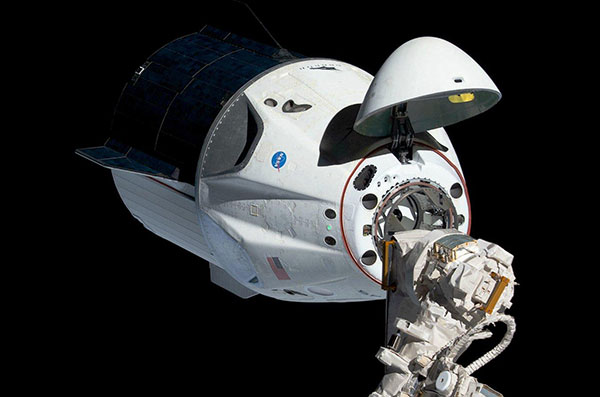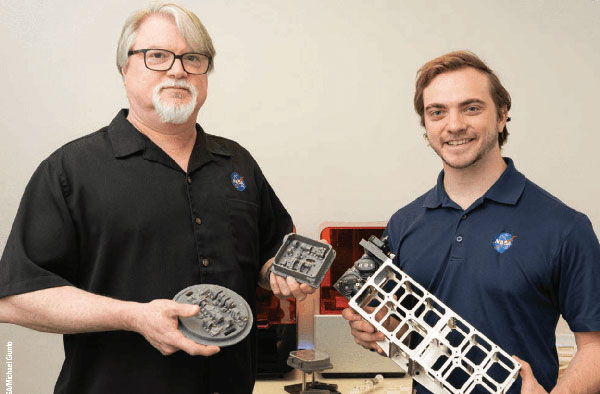NASA Sends Formlabs Parts to Space
Parts will ride aboard the SpaceX Dragon Resupply Capsule.

A SpaceX Dragon Capsule. Image courtesy of NASA’s Goddard Space Flight Center.
Latest News
July 1, 2022
Later in the summer of 2022, SpaceX will launch its 25th commercial resupply services (CRS-25) mission to the International Space Station (ISS). On board the cargo capsule will be 4,500 pounds of food and equipment for the crew members on board the ISS. This mission is part of the ongoing cargo contract between SpaceX and NASA, and involves collaboration and partnership between the two entities.
Among the pieces of equipment on the CRS-25 flight will be electroplated samples printed on a Form 3 stereolithography (SLA) 3D printer from Formlabs. The samples are test strips that will be mechanically tested for properties like tensile strength, etc.

The 3D printed and plated parts will be exposed to the harsh environment of space and the results could inform how NASA, SpaceX and possibly other aerospace manufacturers may incorporate additive manufacturing into potential future product plans.
NASA engineers at the agency’s Goddard Space Flight Center have been working with the Formlabs printed parts to optimize the design of these samples for maximum strength. They created an organic supportive design for the samples to maximize load-bearing capacity. The parts were printed in Rigid 10K Resin, a glass-filled material ideal for stiff, thermally and chemically resistant parts.
Plating Parts For Lightweight Strength
Plating the Rigid 10K Resin printed part increases its strength, as well as mitigates the amount of off-gassing the part emits, according to Formlabs. The plating process, done by plating specialist company RePliForm, created parts that were reportedly much lighter than traditionally machined components for the same application, and the Goddard team was able to design, print, iterate and redesign in a much shorter time frame than with typical machining processes, Formlabs reports. Every component and process has to be priced out, but by reducing labor time, eliminating machining costs, and iterating in-house, the team was able to reduce their overall impact on that budget, Formlabs adds.
Sources: Press materials received from the company and additional information gleaned from the company’s website.
More Formlabs Coverage
Subscribe to our FREE magazine, FREE email newsletters or both!
Latest News
About the Author
DE’s editors contribute news and new product announcements to Digital Engineering.
Press releases may be sent to them via DE-Editors@digitaleng.news.




